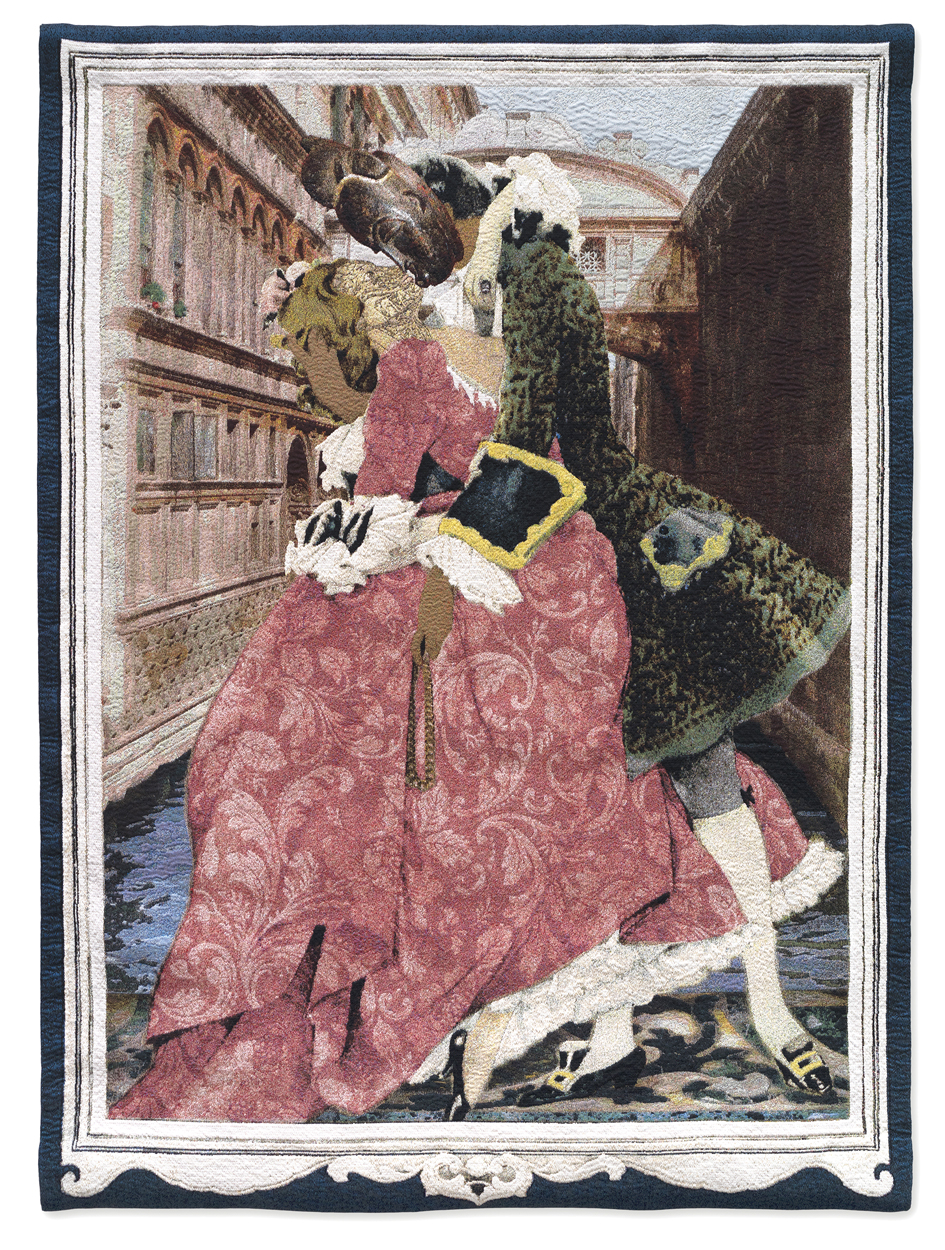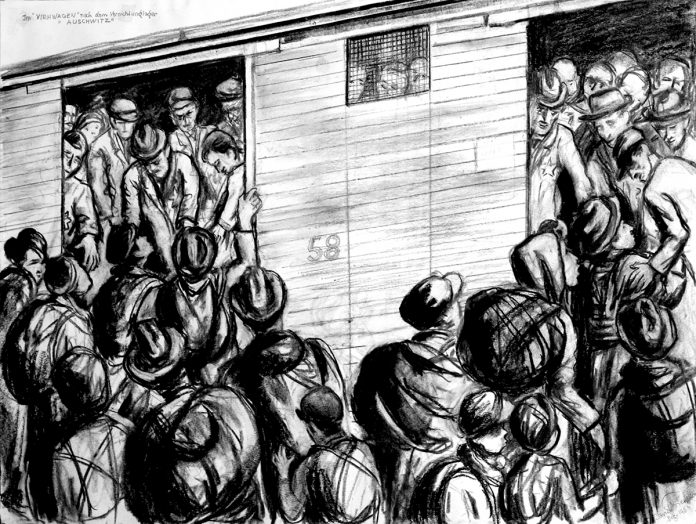by Kaylee Kain, Director of Communication

Art becomes the platform for discussion surrounding history, race, sex and injustice in The Westheimer Distinguished Visiting Artist Chair: Mildred Howard and Testimony: The Life and Work of David Friedman, both opening on Jan. 25 at the Fred Jones Jr. Museum of Art.
San Francisco-based artist Mildred Howard, who has achieved an international reputation for her collages and installations, will serve as the seventh Jerome M. Westheimer, Sr. & Wanda Otey Westheimer Distinguished Visiting Artist Chair. An exhibition of Howard’s work will open at the Fred Jones Jr. Museum of Art on Jan. 25 with a public opening at 7 p.m. Thursday, Jan. 24.
Mildred Howard’s work incorporates a variety of media to create nuanced examinations of gender, race, politics and other issues central to contemporary society. Through her use of collage, sculptural assemblage and large-scale installations, Howard blends American folk art and family photographs among other appropriated objects to explore these increasingly relevant issues of sexual harassment, racial oppression and class struggles found in America.
Her methods for creating these pieces is just as diverse as the themes behind them. Over the course of her influential career, she has not limited herself to any one medium. Her Casanova series is a perfect example of her versatility, in which she uses both collage and jacquard woven tapestry. The endless possibilities and combinations for multiple materials is what fascinates Howard most. “I started off with collage, and I love the mixture of materials,” says Howard. “That’s always interested me – patterns within patterns. You can make art out of anything. That’s my reason for using those materials, because I’m interested in history, because I’m interested in memory and in place, and looking at objects in other kinds of ways that what they were originally intended for.”
Her work in this exhibition provides a platform for discussion revolving around political and sociological topics currently making headlines in regard to the #MeToo movement and immigration, among others.
Also opening this month is Testimony: The Life and Work of David Friedman, which surveys the artist’s long career, with a focus on his series Because They Were Jews!, a visual diary of his time in the Lodz Ghetto in Poland and his internment at the Nazi concentration camp of Auschwitz-Birkenau.
Friedman(n) was born in Mährisch Ostrau, Austria (now Ostrava, Czech Republic), but moved to Berlin in 1911, where he studied under German impressionist Lovis Corinth. With the rise of Nazism, he and his family escaped to Prague in 1938, where he continued to paint for himself and sold artwork until 1941 when the family was deported to Lodz Ghetto. Most of the work from earlier in his career was lost, destroyed, or looted by Nazis.
In 1944, Friedman was separated from his wife and daughter, never seeing them again, and was transferred to Auschwitz-Birkenau. Friedman survived his internment at the infamous concentration camp and married fellow survivor Hildegard Taussig. After living in Israel for five years, the family immigrated to the United States in 1954, eventually becoming citizens and settling in St. Louis, where he worked as a commercial artist for an advertising company, later retiring in 1962. As a Holocaust survivor, Friedman found a new purpose in life to fight anti-Semitism and racial hatred by depicting the horrors he had witnessed and to show them to the world.
Testimony offers a glimpse into the lifelong effects of the Holocaust, but also serves as an affirmation of survival. An event is scheduled on Feb. 28 featuring the artist’s daughter, Miriam Friedman Morris, and Lorne Richstone, associate professor of music at OU, will honor the legacy of Friedman’s work and will include musical excerpts from Jewish composers who were lost to the Holocaust.
More information about these exhibitions and related programs is available on the museum’s website at www.ou.edu/fjjma.
The Fred Jones Jr. Museum of Art is located in the OU Arts District on the corner of Elm Avenue and Boyd Street, at 555 Elm Ave., on the OU Norman campus. Admission to the museum is complimentary to all visitors, thanks to the generosity of the OU Office of the President and the OU Athletics Department. The museum is closed on Mondays. Information and accommodations are available by calling (405) 325-4938 or visiting www.ou.edu/fjjma.
A new exhibition at the Fred Jones Jr. Museum of Art focuses on artist Mildred Howard (b. 1945) and her influential career. She has used a variety of media to engage in pointed yet nuanced examinations of the history and politics of gender, race and other issues central to contemporary society. Howard serves as the seventh guest artist in the university’s Jerome M. Westheimer, Sr. and Wanda Otey Westheimer Distinguished Visiting Artist Chair program. A native of San Francisco, Howard received her master of fine arts degree from John F. Kennedy University in Orinda, California, in 1985, and has worked in the Bay Area for the majority of her career. This exhibition will be on display Jan. 25 through April 7.
Mildred Howard (U.S., b. 1945)
Casanova: Style, Swagger, and the Embracement of the Other I, 2018
Jacquard tapestry, 72 x 54” Courtesy of Magnolia Editions and the artist
Testimony: The Life and Work of David Friedman surveys the career of artist David Friedman (1893-1980), from his early days in Berlin to his late career in St. Louis, Missouri. The exhibition includes portraits and landscapes as well as his powerful series Because They Were Jews!, a visual diary of his time in the Lodz Ghetto in Poland and his internment at the Nazi concentration camp of Auschwitz-Birkenau.Testimony is both an indictment of the horrors of the Holocaust and an affirmation of survival. This exhibition will be on display Jan. 25 through May 26.
David Friedman (Austria, 1893-1980)
Cattle Train to Auschwitz from the series Because They Were Jews!, December 1963, Charcoal, 18 x 24”
Copyright © 1989 Miriam Friedman Morris All rights reserved














